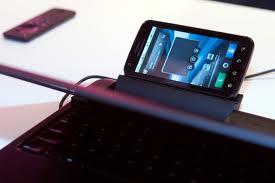Tech
How WI-FI Works and How Physicists Invented It

Everywhere you go these days you see signs that say “Free Wi-Fi” or “Wi-Fi Available Here.” Most people understand that this means they can connect to high speed internet using a wireless device, such as a laptop or smartphone. Most of today’s devices come equipped with Wi-Fi ability. But what exactly is Wi-Fi and who invented it?
The term Wi-Fi stands for Wireless Fidelity. The technology behind it works very similar to the way that radios work. Information / data is created from one source, broken into little, invisible pieces and sent through the air to a receiving source.
Once there, the little pieces of information are put back together so that you can understand what was sent. In the case of radio waves, it is sound waves being sent through the air invisibly by a radio transmitter and being put back together by a radio. These are called radio waves. In the case of Wi-Fi, it is information being sent from one computer router to another computer router. In actuality, Wi-Fi signals are nothing more than higher frequency radio waves.
Asking who invented Wi-Fi is a bit harder to explain. With so many different components that go into making Wi-Fi work, there are many people who contributed to its invention. But in the 1990s a team of physicists from Australia, led by Dr. John O’Sullivan, was credited with discovering Wi-Fi.

The team, named CSIRO, was attempting to solve the problem of radio waves bouncing off of surfaces indoors creating an echo that distorts the radio signal. There were many scientists trying to solve this issue, but the Australian team’s studies in radio astronomy led them to create a chip that could transmit the signal faster, while reducing the echo. The chip they created led them to the discovery of the signal that would become Wi-Fi. This discovery has changed the world in ways that they could have never imagined.
In the earlier days of the internet, connecting your computer to the internet required a cord called an Ethernet cable. The information passed along the cable just as telephone calls did before the invention of cordless phones, or cell phones. But the signal was much slower because it was forced to travel along the narrow wire.
By sending signals through the air, the signal has far less resistance, and moves much faster, though too many obstacles will degrade the signal. Now, instead of needing to connect your computer or device directly to the internet cable, you connect the Wi-Fi router to the internet through a cable and the router broadcasts the signal to many devices at once. As technology gets better, the speed of the signal gets better. Unlike lower frequency radio waves, high speed internet waves transmit on a higher frequency, and travel faster.
Wi-Fi has come a long way in a short time, making high speed internet available to a much broader audience. Technology continues to improve, getting faster and becoming more widespread. Who knows what the future holds for this incredible technology.
-

 Tech11 years ago
Tech11 years agoCreating An e-Commerce Website
-

 Tech11 years ago
Tech11 years agoDesign Template Guidelines For Mobile Apps
-

 Business6 years ago
Business6 years agoWhat Is AdsSupply? A Comprehensive Review
-

 Business10 years ago
Business10 years agoThe Key Types Of Brochure Printing Services
-

 Tech8 years ago
Tech8 years agoWhen To Send Your Bulk Messages?
-

 Tech5 years ago
Tech5 years ago5 Link Building Strategies You Can Apply For Local SEO
-

 Law5 years ago
Law5 years agoHow Can A Divorce Lawyer Help You Get Through Divorce?
-

 Home Improvement6 years ago
Home Improvement6 years agoHоw tо Kеер Antѕ Out оf Yоur Kitсhеn

































